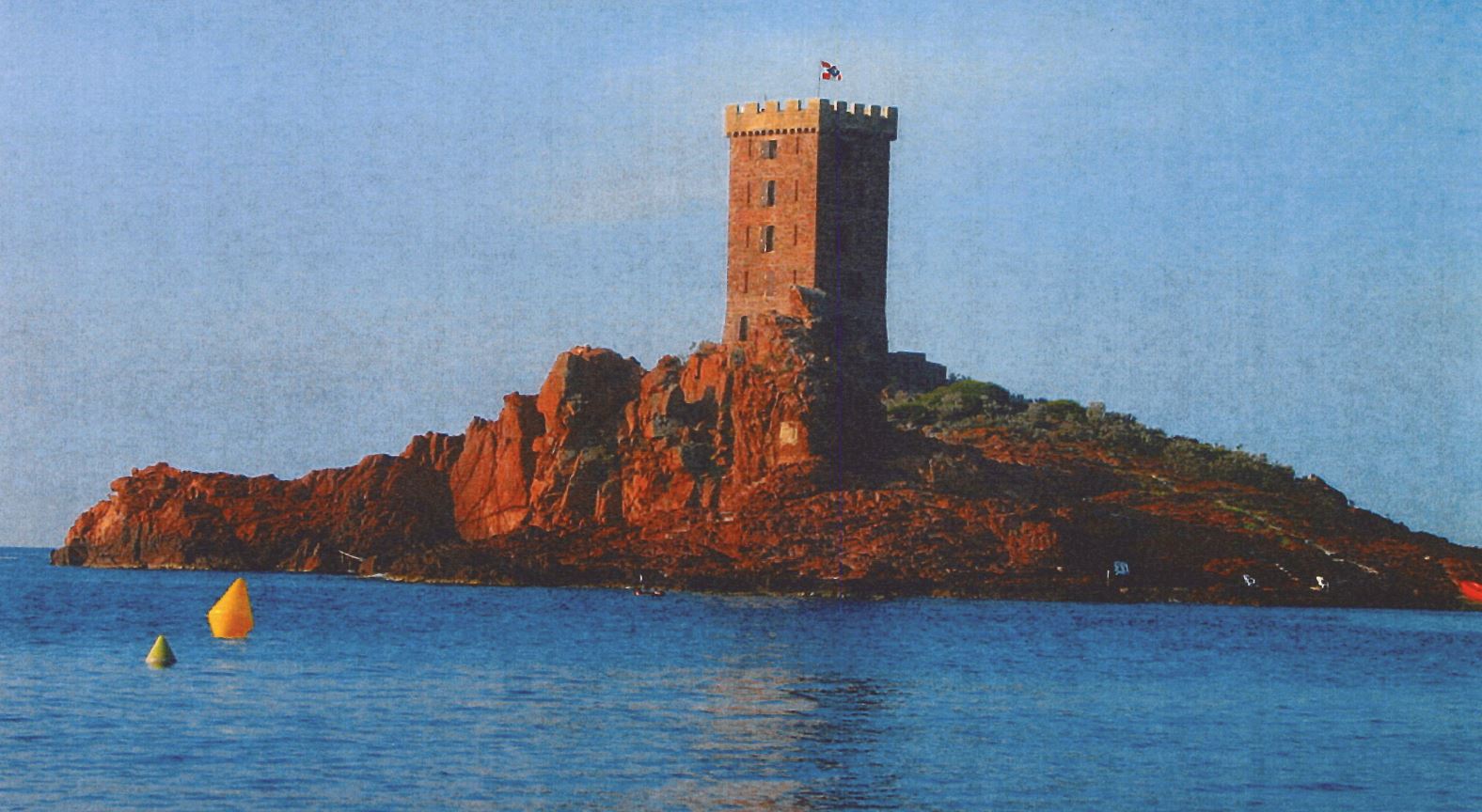Quarries, history and environment
Audio guide in English
THE POUSSAÏ COAST
BEFORE QUARRY EXPLOITATION BEGAN, THE COASTLINE WAS PRESENT
LIKE A HLAND ALTERNATING SMALL ROCKS, GRAVEL AND SAND.
From the 1870s, the very beginning of operations, with discharges from
quarry residues that are piling up, the coast very quickly takes on a
of cliffs.
THE COAST, THE POUSSAÏ
IN 1897 A CONFLICT OPPOSED THE PRUD’HOMIE OF RAPHAËLOIS FISHERMEN (THERE ARE SOME
250 AT THE TIME) WHO COME TO WEDGE THEIR NETS IN THE WATERS OF DRAMONTOIS,
TO THE SAINT-RAPHAËL PORPHYRY QUARRY COMPANY RESPONSIBLE FOR
THE SIGNIFICANT MODIFICATION OF THE COASTLINE CAUSING A DECREASE IN
QUALITY AND QUANTITY OF FISHING.
On November 25, 1897 to put an end to this affair the Inspection
Maritime offers a transaction that includes:
• A financial penalty against quarry operators.
• The creation of a small quay in the cove of Poussaï for the benefit of fishermen.
It will be built in 1907. Over the years it will become the port of Poussaï
current.
THE WAR 1939-1945 THE LANDING
THE LANDING OF AUGUST 15, 1944

QUARRY EXPLOITATION HAD A MAJOR INCIDENCE IN THE PROCESS
OF THIS MILITARY ACTION.
From mid-September 1943 to August 15
1944, the German occupation, by
through the Todt organization,
had requisitioned the quarries and
their workforce. The goal was
to produce materials
various grain sizes, from
crushing, then transporting them
on the sites to be reinforced and protected,
by building fortifications
all sorts.
To do this it was necessary to raise the
pebbles from the beach to the crusher
with the wagons which, one
times loaded manually, were
hauled by small locomotives.
This action required a lot
of labor on the whole range.
It is thanks to this intensive exploitation
that the beach never was
mined and many losses
humans were avoided.
THE LANDING ROLE
BY M. MARCHAND
MR. MARCHAND, LUXEMBOURG CITIZEN, DEPUTY DIRECTOR OF THE COMPANY
OF THE PORPHYRE QUARRIES OF SAINT-RAPHAËL, OF WHICH THE FAMILY WAS ONE OF THE
SHAREHOLDERS, WAS ALSO A RESISTANT AND INFORMER OF ALLIES IN LONDON
(THIS WAS ONLY KNOWN LATER AT THE END OF THE CONFLICT).
He took advantage of the rivalry between
General Baessler, responsible for
coastal defence, and the direction of
the Todt organization which he encouraged, with
a lot of conviction, to exploit
the pebbles of the beach to support
to their large material needs.
Thus in the early morning of August 15, 1944
after an unsuccessful attempt to
landing on the beach of Fréjus
(two boats were sunk because
of floating mines) the decision was
quickly taken to disembark on
Dramont beach (the only one not
mine in the region).
The Way to Liberation
was drawn.
THE GOLD ISLAND

THE AFFECTIVE RELATIONSHIP WITH ILE D’OR
CARRIERS HAD BEEN HIRED BY AUGUSTE LUTAUD, WITH
FOR MISSION: EXTRACT STONES ON THE ILE D’OR SITE FOR THE COMPANY
OF MASONRY, IN ORDER TO BUILD A TOWER.
Thus, in the village, almost all
had a relative who, every morning,
went by boat to work on
the island, without really knowing the purpose of the
project.
This uncertainty fueled questions
and therefore all
rumors.
During the works, the workers
get to know their boss,
gracious and generous man. They attended
at the party organized for the
school children on the occasion of
the inauguration, during which
he hands over he hands over the keys and the crown
to Amélie Borgoni, best
student of the institution. During
a few days, the island was called
Sainte-Amelie. This ceremony was
unfolded in the gardens of the chalet.
Some workers are treated by
the doctor himself. A relationship
friendly, respectful and reciprocal
then settled between the Dramontois
and Auguste Lutaud.
As he never lived in his tower,
the workers often went there to
fishing, picnicking, young people went
there “to flirt”.
The Dramontois had appropriated it,
they are still very proud of it and,
often chauvinistic, they maintain
with the Île d'Or, which remained the property
private, emotional relationship.






